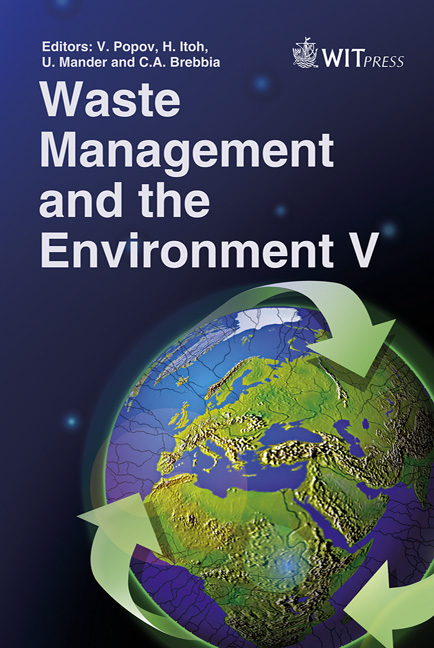Reduction Of Nitrous Oxide Emission By A Smaller Air To Fuel Ratio In A Large-scale Sewage Sludge Fluidized Bed Combustor
Price
Free (open access)
Transaction
Volume
140
Pages
13
Page Range
43 - 55
Published
2010
Size
476 kb
Paper DOI
10.2495/WM100051
Copyright
WIT Press
Author(s)
L. D. Korving, C. Schilt & W. De Jong
Abstract
A full-scale experimental study showed a 70% reduction of the nitrous oxide emission from the combustion of sewage sludge by a smaller air-to-fuel ratio. The experiments were performed on the furnaces of one of Europe’s largest sludge-incinerators, Slibverwerking Noord-Brabant. The results were implemented in the daily operation and they significantly reduced the emission of nitrous oxides without increasing emissions, such as NOx and NH3. The study showed a correlation between the NOx emission and the bed temperature, while the N2O emission correlates to the free board temperature. With the lower air-fuel ratio the bed temperature could be maintained at constant levels while increasing the temperature in the freeboard, thus achieving a reduced N2O emission without increasing the NOx emission. The lower air input also reduces the energy use of the forced and induced draught fans, giving a substantial financial benefit. A simplified chemical reactor model was set up for the freeboard of the furnace. The model fits with the experimental results of in-furnace measurements. In addition, a hypothetical case shows that improving the reactor via a Plug Flow Reactor configuration is most beneficial. Keywords: nitrous oxide, nitrogen oxides formation, fluidized bed combustion, air-fuel ratio, sewage sludge, temperature, lambda factor.
Keywords
nitrous oxide, nitrogen oxides formation, fluidized bed combustion,air-fuel ratio, sewage sludge, temperature, lambda factor





